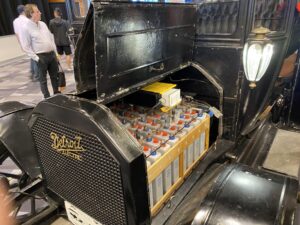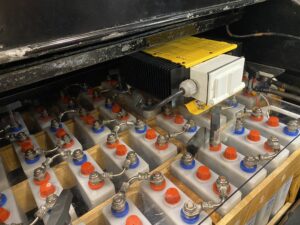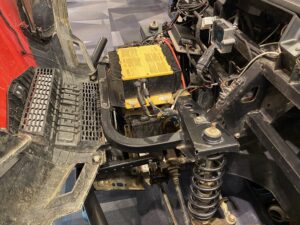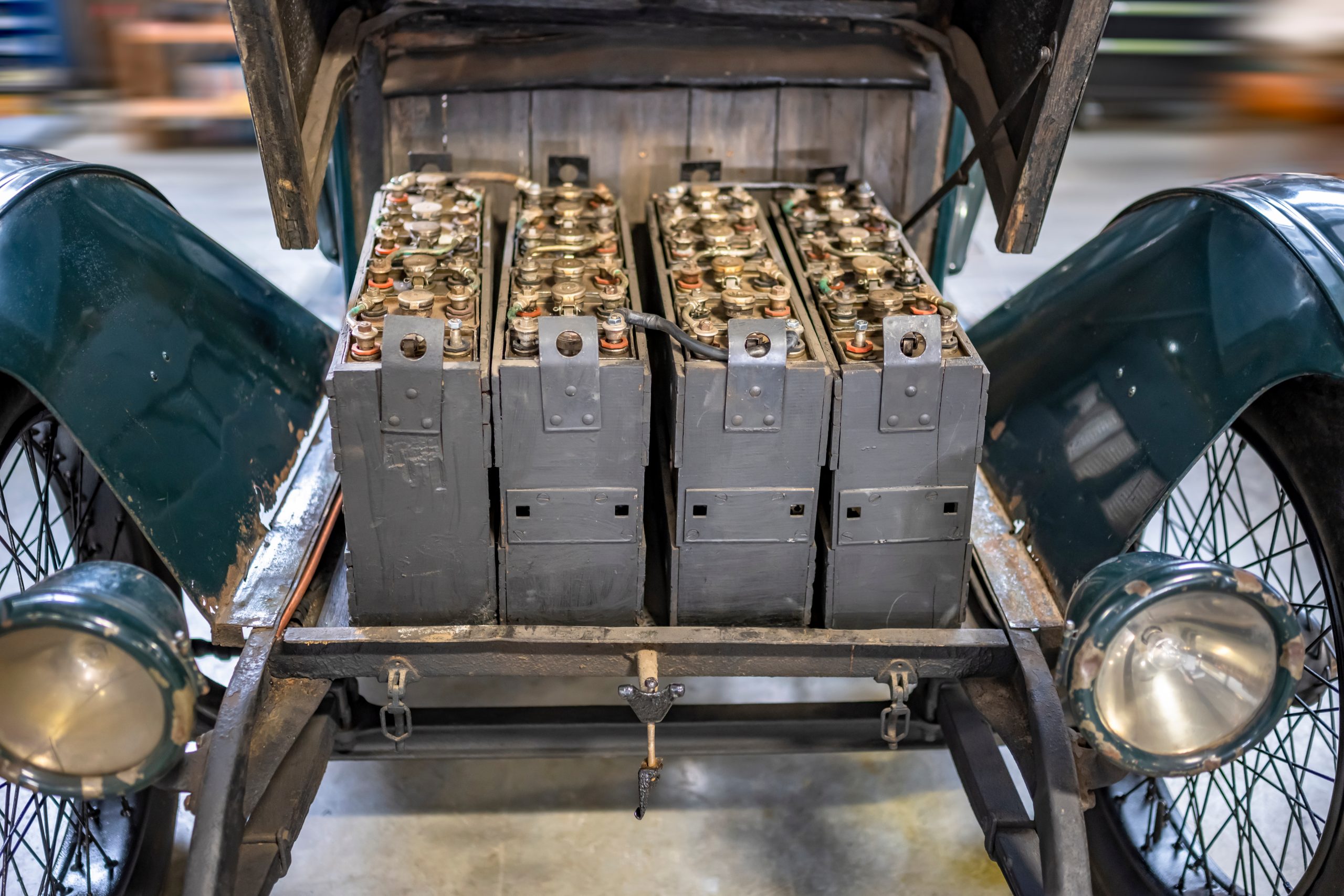Electrification and the transition away from fossil fuels is one of the most significant powering shifts in modern industrial applications. In particular, the last 30 years saw substantial developments that accelerated electrification’s speed and success.
However, while the adoption and prevalence of electric vehicles (EVs) might seem more recent, their initial emergence predates the invention of lead-acid and rechargeable batteries. From the very beginning of EVs to more recent electrification advancements, we’ll examine some of the main drivers and innovations below.
The History of Electric Vehicles



While the earliest EVs are credited to US, Dutch, Scottish and Hungarian inventors developing horseless carriages around the 1830s, it wasn’t until Gaston Planté unveiled his lead-acid battery in 1860 that practicality entered the mix. However, even then, with their power sources lacking rechargeability, those earliest EVs didn’t provide much utility, particularly for industrial or commercial applications.
Credit for the invention of the first “practical EVs”—taking advantage of lead-acid batteries and charging capabilities—goes to Thomas Parker in 1884, followed by William Morrison in 1887. And despite assumptions, these EVs were popular. By 1917, electric and steam-powered vehicles controlled the market:
- 40% steam-powered vehicles
- 38% electric vehicles
- 22% gas-powered vehicles
Unfortunately, charging infrastructure and cost remained too difficult to overcome at the time, and more OEMs turned to fossil fuels as their solution. Still, despite the dominance of gas and diesel that followed, Parker and Morrison’s models helped usher in the electrification of commercial and industrial vehicles that truly took off roughly 100 years later.
Since the 1990s, EVs have continually achieved increasing adoption and market share. And much like how the introduction of Planté’s lead-acid battery fostered innovation, the same occurs today.
Rapid Industrial and Commercial Vehicle Electrification—Key Drivers
Initially, operator and passenger comfort drove the rapid electrification of industrial and commercial vehicles beginning around 30 years ago. Comfort, noise reduction, vibration and other ride-quality factors all became growing concerns that led original equipment manufacturers to re-explore EVs’ applications and utility.
Particularly in commercial settings, the effects of indoor operation became a major consideration as well. Hazards produced by internal combustion engines (ICEs) that affect short- and long-term health include:
- Carbon monoxide and other fumes
- Particulate matter (PM)
- Toxic materials that could lead to serious chronic health conditions
As a result, the majority of many types of indoor commercial vehicles and machines now operate on electric power, such as:
- Lift trucks
- Scissor lifts
- Floor scrubbers
Electrification simply provided a better—and much cleaner—solution.
Technological Innovation and Cost Reduction Kicks Electrification into Overdrive
Lead-acid batteries have remained a mainstay for EVs since 1860—largely due to their affordability. Innovations over that time primarily involved sealing and improving their chemistries (e.g., gel, AGM) to help reduce maintenance and stress-related effects.
However, around the same time rapid electrification began, lithium battery costs began dropping sharply. Per an MIT analysis, lithium batteries now cost around 3% of what they did in 1990. Despite lithium batteries still often costing double or more than lead-acid alternatives, they offer significant performance improvements over lead-acid options that OEMs, fleet managers, and operators often consider worth the expense. As a result, their use in commercial and industrial vehicles has massively aided electrification.
Lithium’s better performance includes the following categories:
- Power
- Capacity
- Depth of discharge
- Lifecycle
- Charging time
- Maintenance
And as lithium battery prices continue falling (and capabilities and economies of scale further improve), OEMs’ will likely continue transitioning away from lead-acid batteries.
On-Board Battery Charging
As demonstrated by the very first electric vehicles’ minimal utility, charging capabilities and infrastructure are as important a factor in electrification as battery technology.
Fortunately, charging technology has made immense strides in meeting operator and fleet management demands. And today’s innovations in this space prioritize charging capabilities to further increase the viability of EVs and reduce reliance on outdated combustion engine technology.
Early Off-Board Charging
Off-board charging dates back to the first days of the lead-acid battery. Shortly following the 20th century’s turn, public and private charging infrastructure for EVs became more available. For example, GE first introduced chargers like these (e.g., the first Wattstation) in 1904 and continued producing them for roughly 20 years.
Until more recently, most charging required off-board devices.
Today’s On-Board Charging

On-board battery charging innovations provided another boon aiding the rapid electrification of commercial and industrial vehicles. Power availability and charge time long-remained challenges that electrification needed to overcome, but on-board chargers address these difficulties.
For example, on-board chargers enable opportunity charging—or plugging into the closest power source wherever EVs are and at any time (e.g., during breaks, overnight). No additional devices or cables also benefits using EVs in multiple locations without concerns over lost or damaged components (e.g., different facilities, rentals).
Combined with lithium batteries’ faster charging capabilities, operators and fleet managers can transition to electric without concerns over their EVs running out of power in the middle of jobs.
Still, some applications—typically higher-powered or in hazardous working conditions—rely on off-board chargers. As with other design and manufacturing considerations, OEMs should choose between on- and off-board charging based on EV application.
Low-Power, Low-Voltage On-Board Chargers
Low-power, low-voltage on-board chargers provide power to smaller commercial, industrial and recreational EVs, such as golf cars, scissor-lifts and floor scrubbers. Through most of the last 30 years of electrification, these on-board chargers have met the following requirements:
- Voltages – 24, 36, or 48V
- Charge time – 8 to 12 hours (i.e., “overnight”)
- Charging power – 300 to 1000W
- Power source – Residential AC outlets (i.e., 120V/15A or 230V/10-16A)
- Net charging power – <1200W
Innovations for On-Board Chargers
In this same timespan, innovations for low-power, low-voltage on-board chargers have emerged to better meet the demands of various applications and operator and fleet manager needs. Aided by more experience and economies of scale, charging experts have improved:
- Ruggedness – On-board chargers must withstand shock, vibration, and other stresses without suffering damage to components (e.g., off-road use, impacts), particularly because of the limited or absent suspensions in smaller commercial and industrial EVs.
- Sealing – Many electric vehicles and machines operate in environments where they may come into contact with liquids and fine particles that could affect operation. Chargers must meet the necessary ingress protection (IP) rating for their application.
- High frequency – Higher frequency chargers achieve greater efficiency by minimizing power conversion losses—resulting in lower power costs, lower charging temperatures, and other benefits.
- Digital power control and smart communication – Operators and fleet managers need granular controls, telematics data, and other capabilities to achieve the best operation and return on their investment.
- Global regulatory certification – Governments worldwide enact increasingly strict regulations—typically over environmental and health concerns—that OEMs can meet more easily by following international standards and as manufacturing scales.
- Scalable and quality manufacturing – Electrification drivers have led more OEMs to electrify their offerings, requiring greater inventories of battery and charger parts and components along with maintaining their quality standards at scale.





